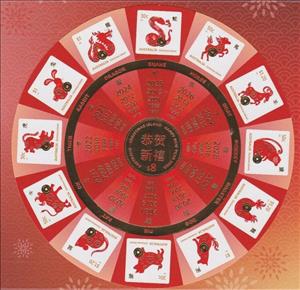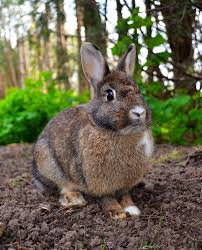Mini Sheet: Year of the Snake 2025 (Christmas Island 2025)
Year of the Snake 2025 (Christmas Island 2025)
07 January (Christmas Island ) within release Year of the Snake 2025 goes into circulation Mini Sheet Year of the Snake 2025 face value 17 Australian dollar
| Mini Sheet Year of the Snake 2025 in catalogues | |
|---|---|
| Colnect codes: | Col: CX 2025.01.07-07 |
Mini Sheet is square format.
Sold by Australia Post in souvenir pack for Au$17.50Also in the issue Year of the Snake 2025:
- Stamp - Cattle face value 50;
- Stamp - Cattle face value 50;
- Stamp - Dog face value 1;
- Stamp - Dog face value 1;
- Stamp - Dragon face value 1;
- Stamp - Dragon face value 1;
- Stamp - Goat face value 1.20;
- Stamp - Goat face value 1.20;
- Stamp - Horse face value 50;
- Stamp - Horse face value 50;
- Stamp - Monkey face value 50;
- Stamp - Monkey face value 50;
- Stamp - Pig face value 30;
- Stamp - Pig face value 30;
- Stamp - Rabbit face value 1;
- Stamp - Rabbit face value 1;
- Stamp - Rat face value 1.20;
- Stamp - Rat face value 1.20;
- Stamp - Rooster face value 1.20;
- Stamp - Rooster face value 1.20;
- Stamp - Snake face value 30;
- Stamp - Snake face value 30;
- Stamp - Tiger face value 30;
- Stamp - Tiger face value 30;
- Stamp - Year of the Snake 2025 face value 1.50;
- Stamp - Year of the Snake 2025 face value 3;
- Stamp - Year of the Snake 2025 face value 3.30;
- Stamp - Year of the Snake 2025 face value 3.30;
- Full Pane - Year of the Snake 2025 face value 5*3.30;
- Souvenir Sheet - Year of the Snake 2025 face value 7.80;
- Mini Sheet - Year of the Snake 2025 face value 16.80;
- Mini Sheet - Year of the Snake 2025 face value 17;
- Stamp - Year of the Snake 2025 face value 8;
- Gutter Pairs - Year of the Snake 2025 Gutter Strip face value 10*1.50;
Mini Sheet Year of the Snake 2025 it reflects the thematic directions:
Animals are multicellular, eukaryotic organisms of the kingdom Animalia (also called Metazoa). All animals are motile, meaning they can move spontaneously and independently, at some point in their lives. Their body plan eventually becomes fixed as they develop, although some undergo a process of metamorphosis later on in their lives. All animals are heterotrophs: they must ingest other organisms or their products for sustenance.
Chinese New Year or the Spring Festival (see also § Names) is a festival that celebrates the beginning of a new year on the traditional lunisolar Chinese calendar. Marking the end of winter and the beginning of spring, observances traditionally take place from Chinese New Year's Eve, the evening preceding the first day of the year, to the Lantern Festival, held on the 15th day of the year. The first day of Chinese New Year begins on the new moon that appears between 21 January and 20 February
The domestic dog (Canis lupus familiaris or Canis familiaris) is a member of genus Canis (canines) that forms part of the wolf-like canids, and is the most widely abundant carnivore. The dog and the extant gray wolf are sister taxa, with modern wolves not closely related to the wolves that were first domesticated. The dog was the first domesticated species and has been selectively bred over millennia for various behaviors, sensory capabilities, and physical attributes. Their long association with humans has led dogs to be uniquely attuned to human behavior and they are able to thrive on a starch-rich diet that would be inadequate for other canid species. Dogs vary widely in shape, size and colours. Dogs perform many roles for people, such as hunting, herding, pulling loads, protection, assisting police and military, companionship and, more recently, aiding handicapped individuals. This influence on human society has given them the sobriquet "man's best friend".
The horse (Equus ferus caballus) is one of two extant subspecies of Equus ferus. It is an odd-toed ungulate mammal belonging to the taxonomic family Equidae. The horse has evolved over the past 45 to 55 million years from a small multi-toed creature, Eohippus, into the large, single-toed animal of today. Humans began to domesticate horses around 4000 BC, and their domestication is believed to have been widespread by 3000 BC. Horses in the subspecies caballus are domesticated, although some domesticated populations live in the wild as feral horses. These feral populations are not true wild horses, as this term is used to describe horses that have never been domesticated, such as the endangered Przewalski's horse, a separate subspecies, and the only remaining true wild horse. There is an extensive, specialized vocabulary used to describe equine-related concepts, covering everything from anatomy to life stages, size, colors, markings, breeds, locomotion, and behavior.
Rabbits are small mammals in the family Leporidae (which also includes the hares), which is in the order Lagomorpha (which also includes pikas). The European rabbit, Oryctolagus cuniculus is the ancestor of the world's hundreds of breeds of domestic rabbit. Sylvilagus includes 13 wild rabbit species, among them the seven types of cottontail. The European rabbit, which has been introduced on every continent except Antarctica, is familiar throughout the world as a wild prey animal, a domesticated form of livestock and a pet. With its widespread effect on ecologies and cultures, in many areas of the world, the rabbit is a part of daily life – as food, clothing, a companion, and a source of artistic inspiration.







